Susquehanna Valley Congregation Aims to Transform Intimidating Challenges into Approachable Actions
By Jeff Milchen
Reverend DC Fortune and Sara Phinney Kelley, Director of Religious Growth and Learning at the Unitarian Universalist Congregation of the Susquehanna Valley in Pennsylvania, were looking for inspiration as they brainstormed developing a multigenerational, interactive service preceding Martin Luther King Day this year. They discussed incorporating New Year’s resolutions into the sermon but sought to find a way to make the discussion something that would involve UU justice priorities and stick with participants, rather than just spark momentary ideas.
The resulting project had an unlikely source of inspiration: a 1972 Playboy magazine interview with Buckminster Fuller, the architect, inventor, and philosopher (among other roles). Fuller compared the challenge of steering an ocean liner to bending the arc of history toward justice. Rudders on these ocean vessels extend several stories in height and weigh many tons, so moving them directly would require huge amounts of force and fuel.
But the invention of trim tabs—basically small plates attached to the rudder—solved this challenge. When the ship's captain turns a steering wheel, it slightly rotates these small plates, which disrupts the water pressure just enough to enable the giant rudder to move easily.
As individuals, Fuller explains, few of us have the power to move the rudder on societal injustices directly, but we can disrupt the status quo in small ways that facilitate much larger movements. Fuller believed in this concept so deeply that his gravestone and adjacent plaque were inscribed “Call Me Trimtab” upon his death in 1983.
In preparing the service for the Susquehanna Valley UU, Fortune and Kelley seized upon a Fuller invention, the geodesic dome. Fuller conceived the domes as a lightweight, inexpensive, and energy-efficient home design, though numerous drawbacks ultimately precluded mass adoption. Combining the geodesic model with the idea of trim tabs, Fortune and Kelley imagined building a complete geodesic sphere, not as a shelter, but as a physical expression of individuals' resolutions for ways in which they will positively impact issues they care deeply about. It would be a way to engage folks physically as well as intellectually.
After finding an online calculator to provide the needed number and dimensions of triangles for the five-foot diameter sphere, Fortune purchased light plywood and zip ties, cut the triangles, and drilled holes for connections. For the engineers and geometry fans out there, the dome required a combination of 60 isosceles and 20 equilateral triangles, as shown in the photo below, and used five sheets of plywood.
Fortune recalls, “we had the good sense to do a trial run” of their plan before the service and realized constructing the sphere would take much longer than the course of the service. Fortune, Kelley, and volunteers built the sphere prior to the service and rolled it into the sanctuary. Each congregant was asked to pick one of more than 100 triangular pieces of paper and write a particular justice issue, a hurt of the world that needed to be addressed but that just felt too big for them, and write it in the middle of the triangle. An array of choices for paper and marker colors added to the appeal. Though Fortune and Kelley had kids in mind, Fortune noted, “Omigod--adults fight over marker colors more than kids!”
Participants then were asked to place in each corner of their triangle one small “trim tab” action they would take to help make a small difference on their priority issue. Everyone proceeded to stick their ideas and resolutions onto one of the triangles on the sphere, which will remain in place until after the conclusion of the annual 30 Days of Love campaign, another inspiration for the sermon and activity. Kelley says they also made it easy for remote participants, who simply typed their issue and trim tab ideas into the chat box for on-site volunteers to add.
“We’ve been striving to make services more interactive,” said Kelley, but expressed concern about how the activity would be received. “Universally, people said this was fun and interesting,” said Kelley. Many senior congregants mentioned their enthusiasm for seeing kids involved in the service. All who missed the MLK weekend service are invited to add their ideas to the sphere through mid-February and subsequent sermons by Fortune and lay leaders reference the concerns and resolutions it contains.
Once it’s removed from the sanctuary, Kelley will inventory the ideas congregants placed and she believes the record will provide valuable guidance for decisions about which justice issues the congregation tackles collectively. Climate Justice is one oft-cited concern and Kelley mentioned they now are exploring UUA’s Green Sanctuary program. Kelley also mentioned how many young people cited capitalism and excessive wealth disparities as a concern. Many congregants’ resolutions included speaking out more and immersing themself in material presenting issues from the perspective of oppressed people.
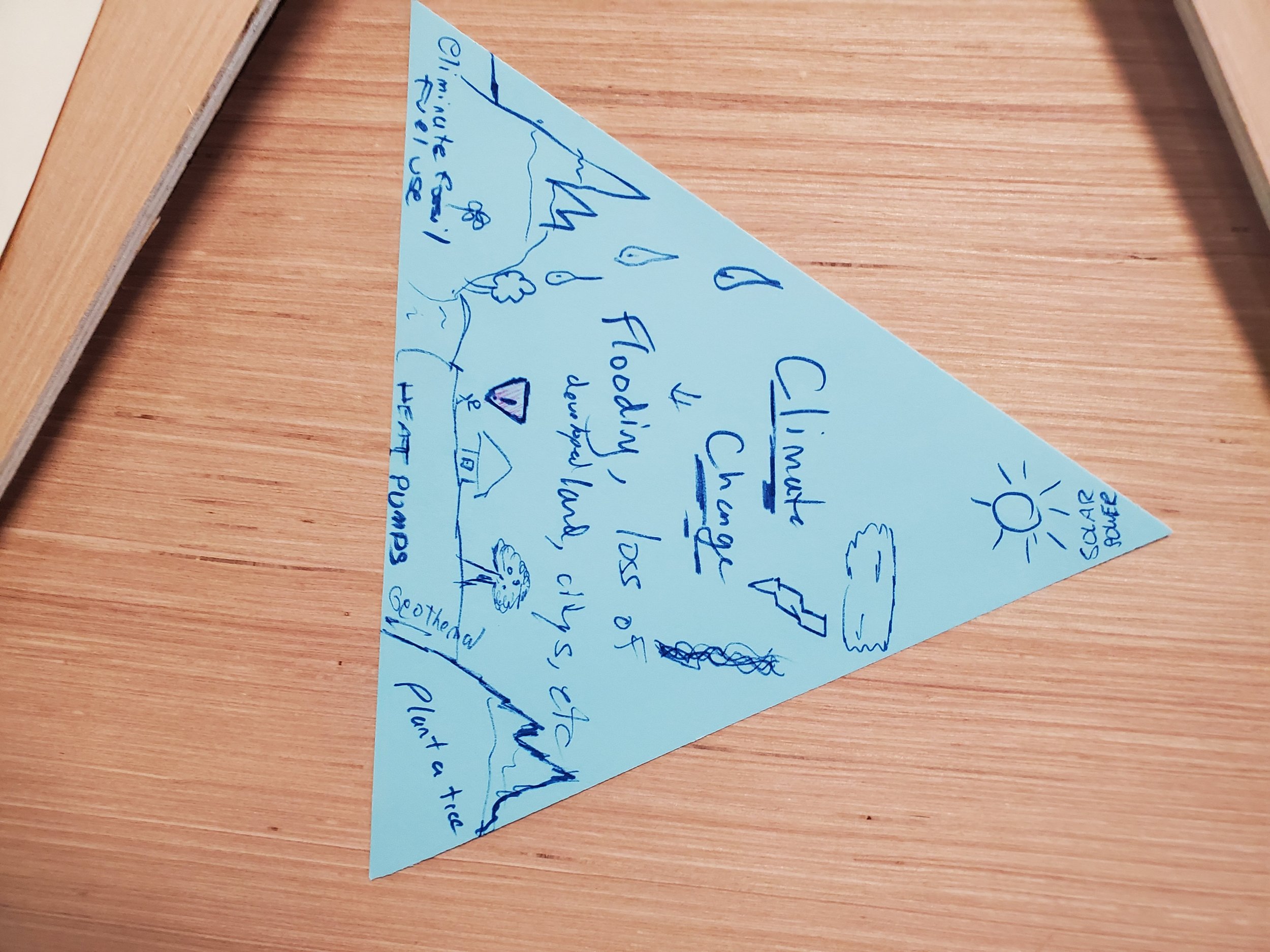

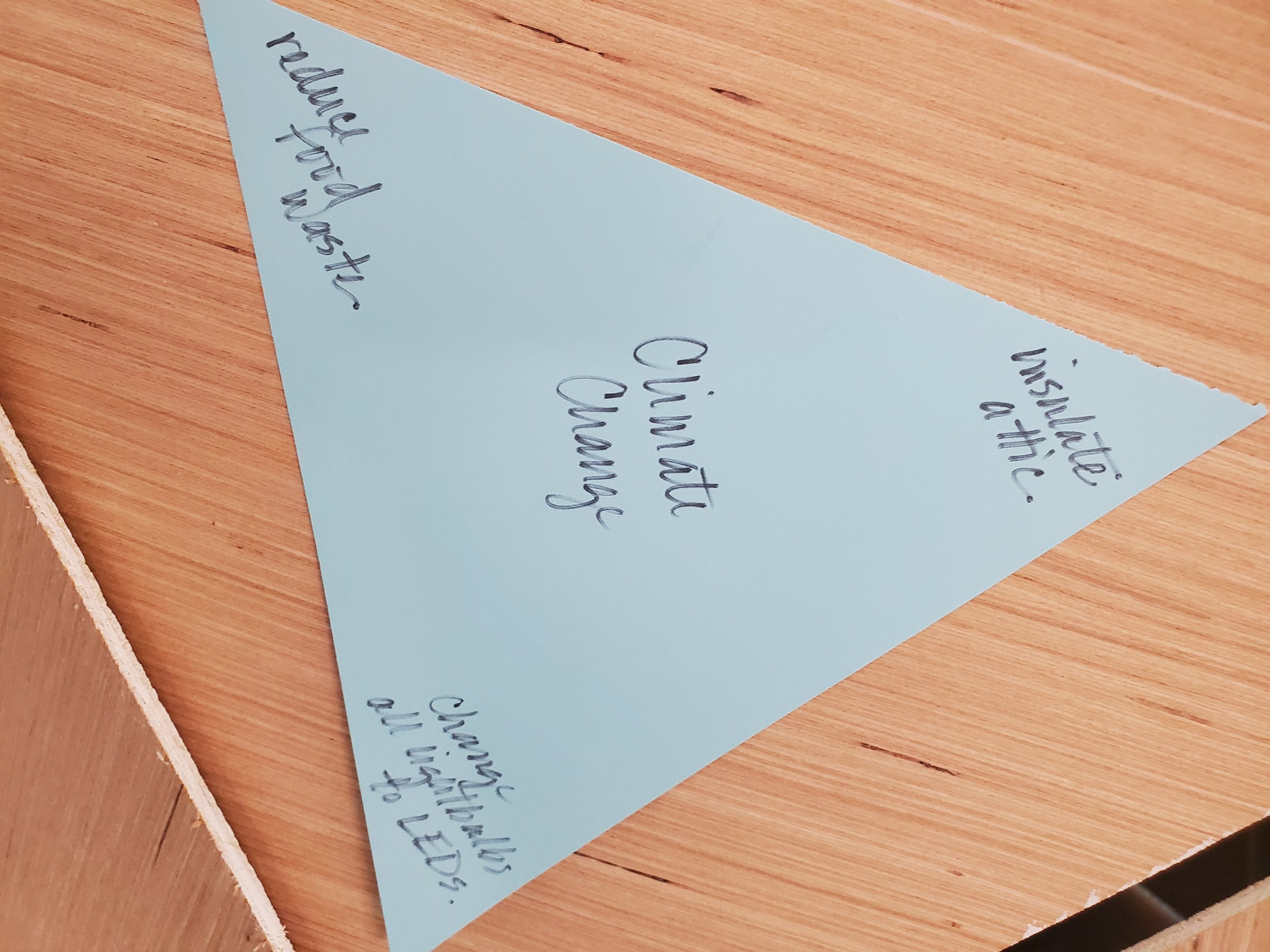
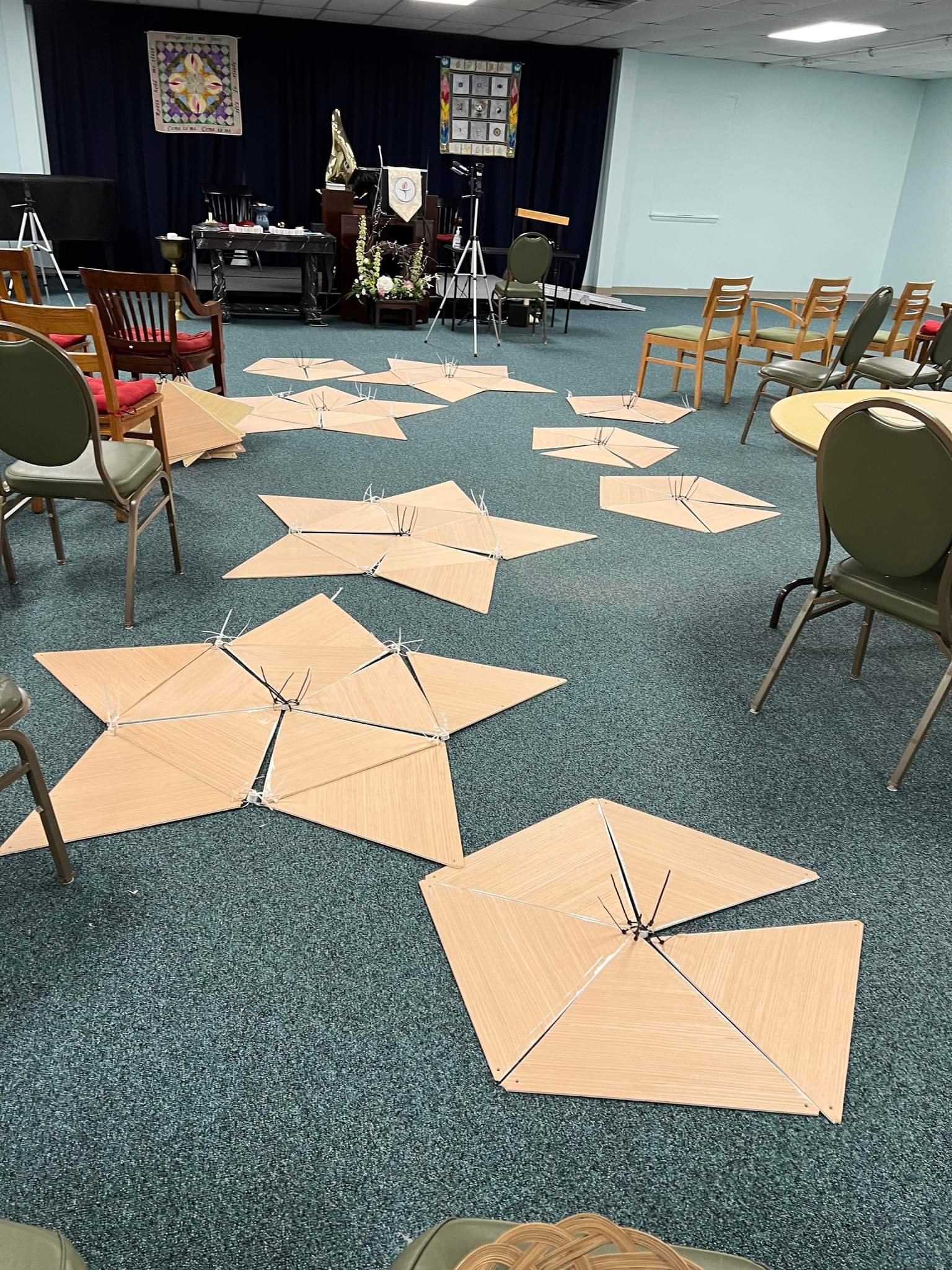
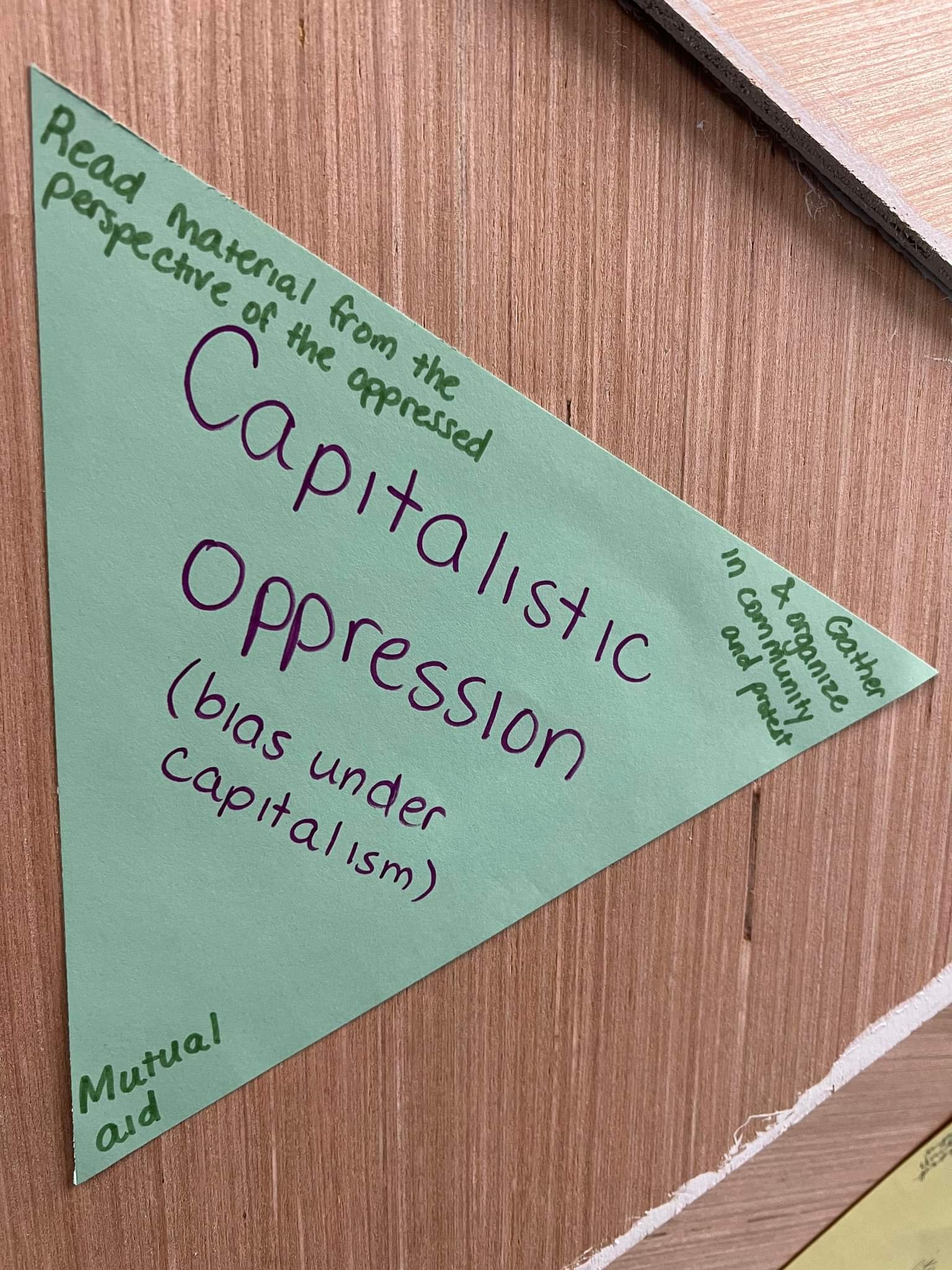
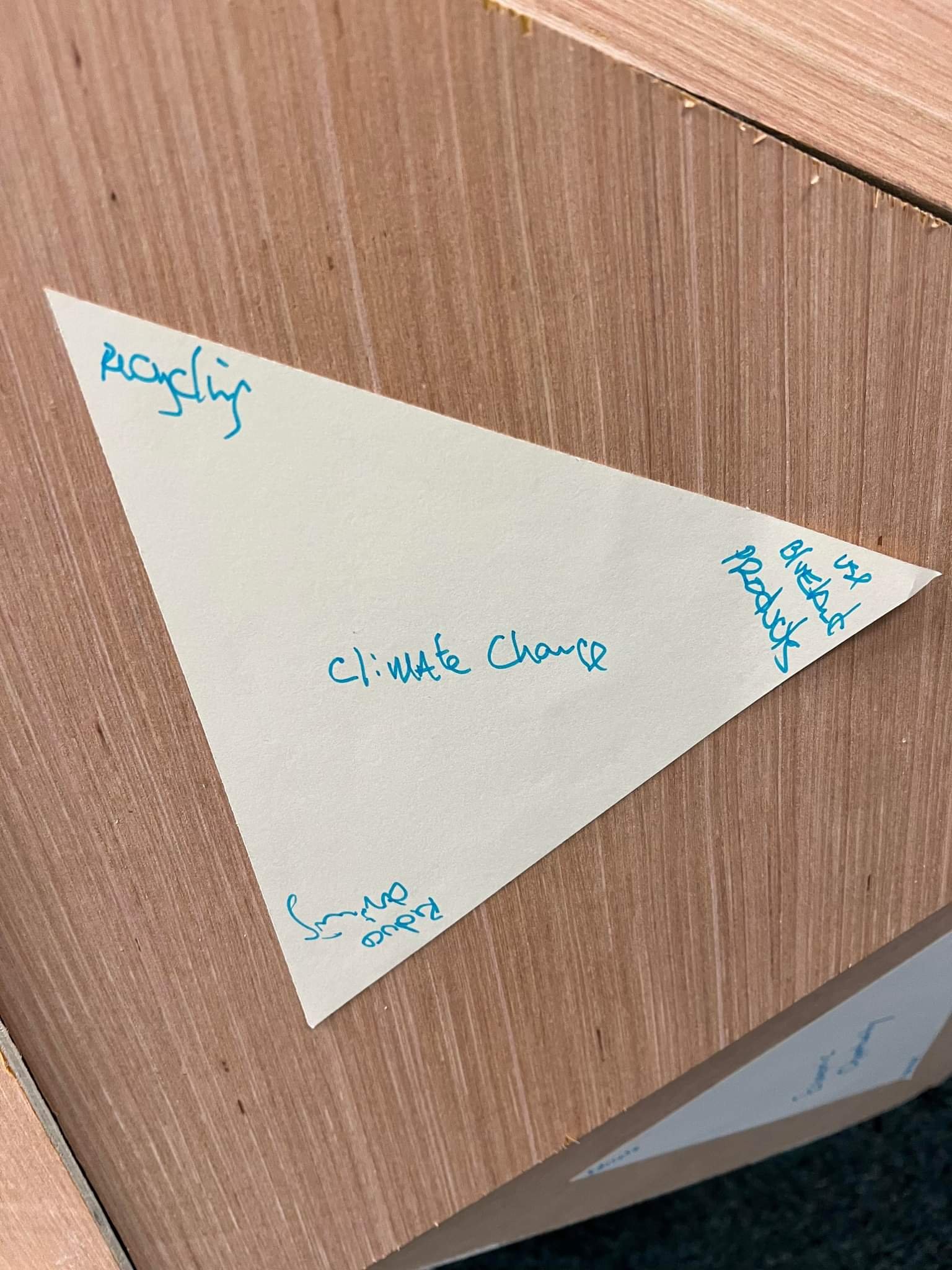
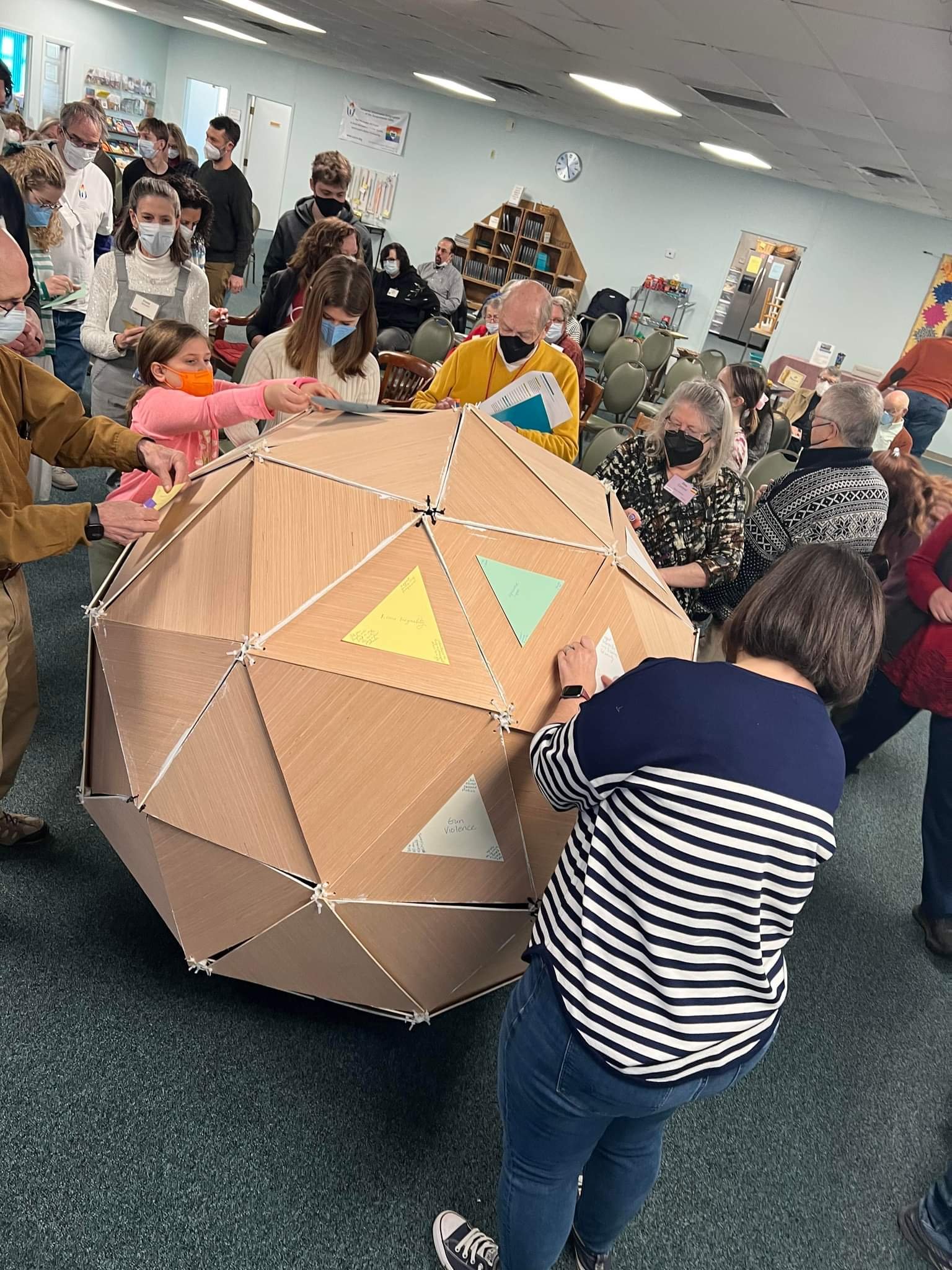

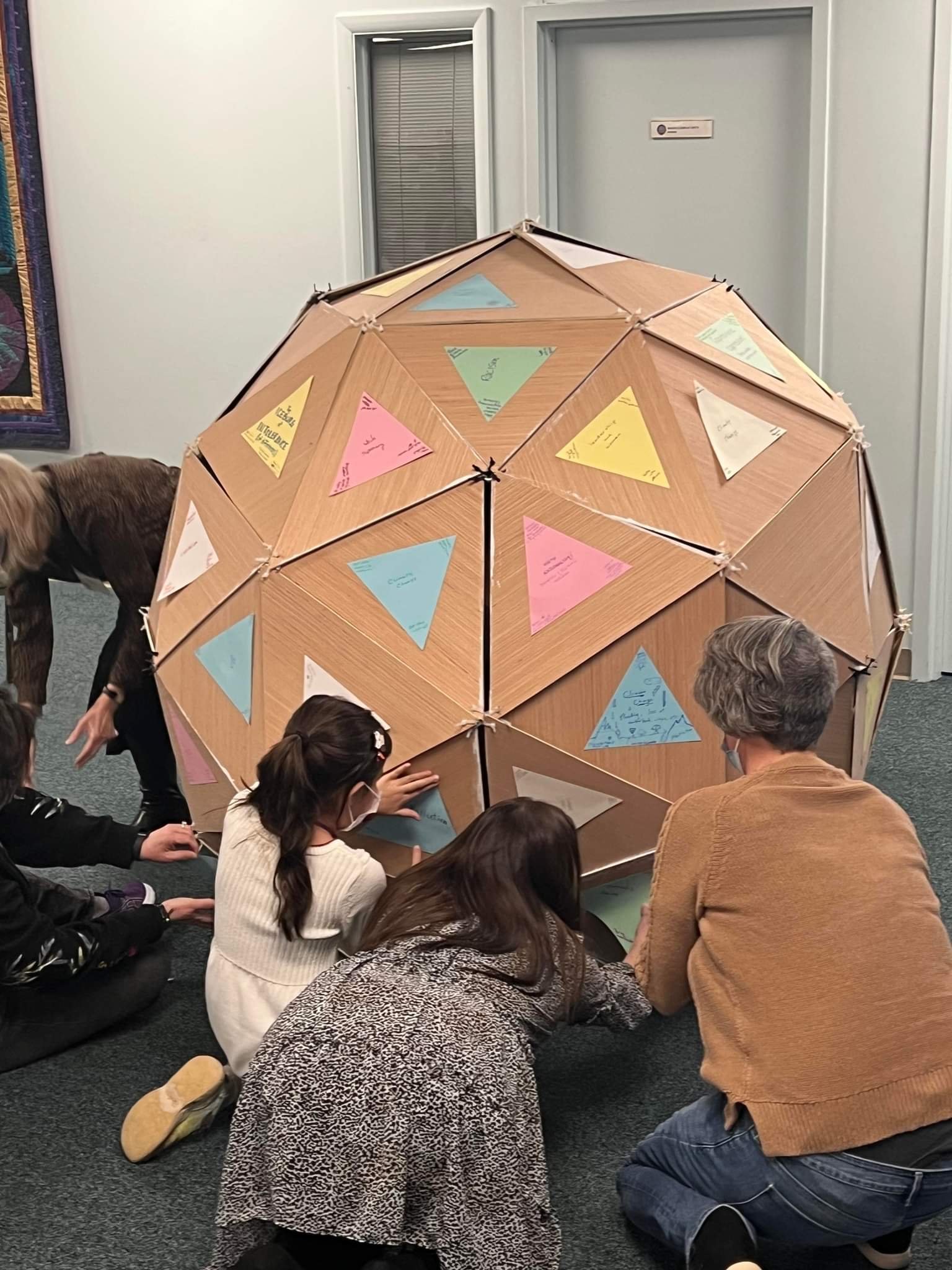
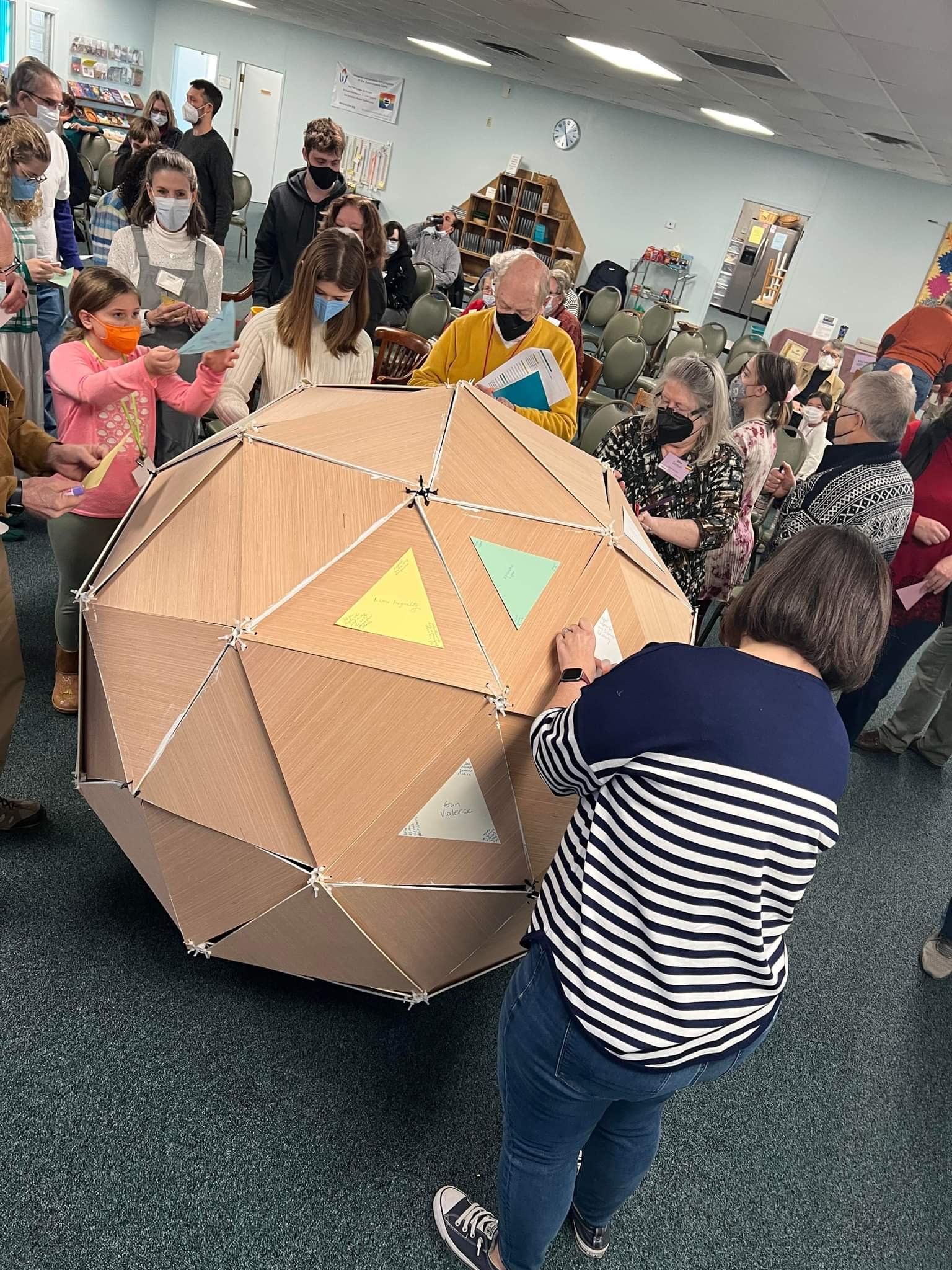
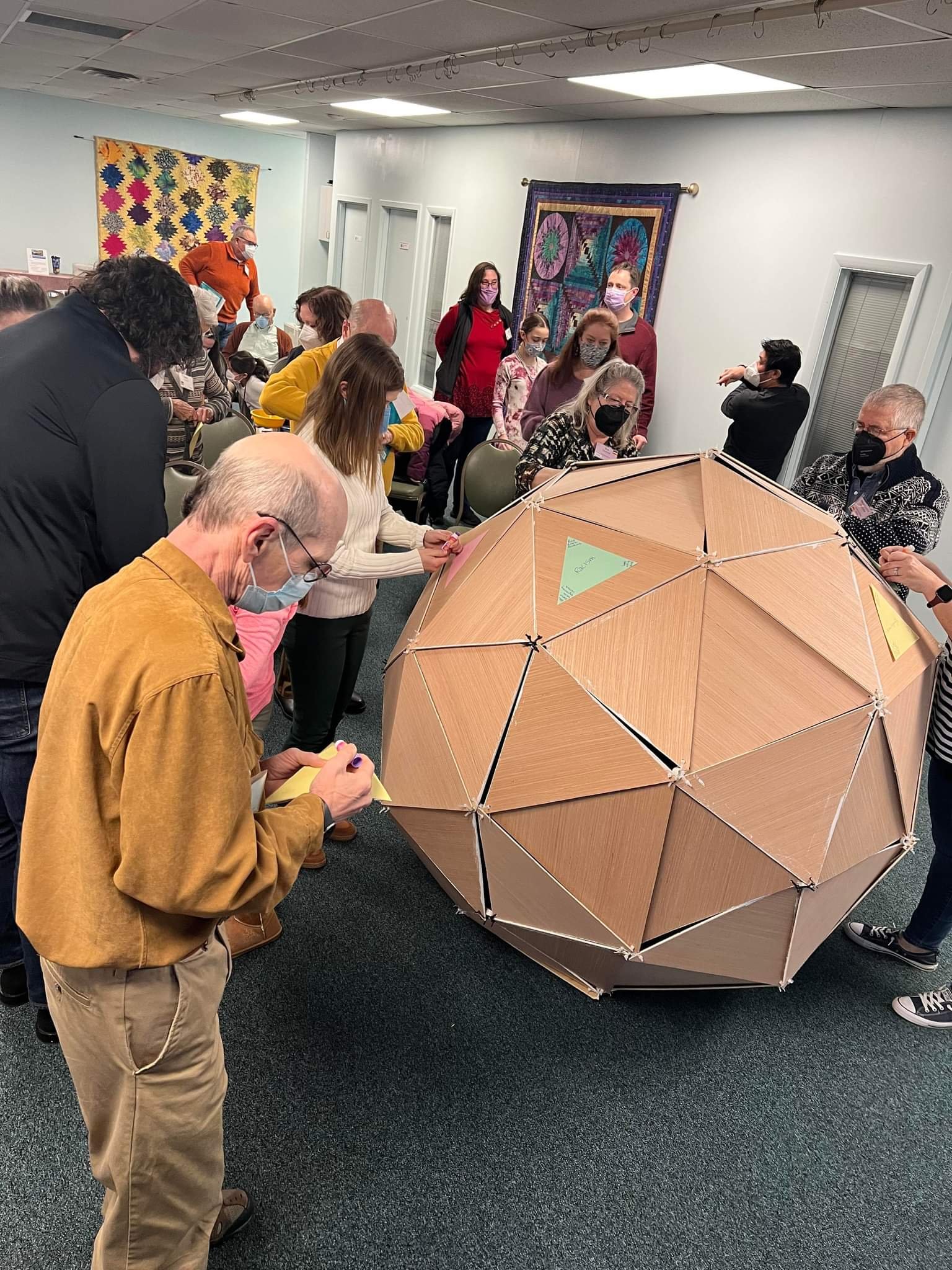
Fortune shared an interesting observation from the dome construction process, noting, “the dome was totally unstable when it was almost done.” Not until the 80th and final piece was connected did the sphere have the structural integrity to cohere when moved.
You can watch or listen to Rev. Fortune’s MLK Day service on YouTube.




